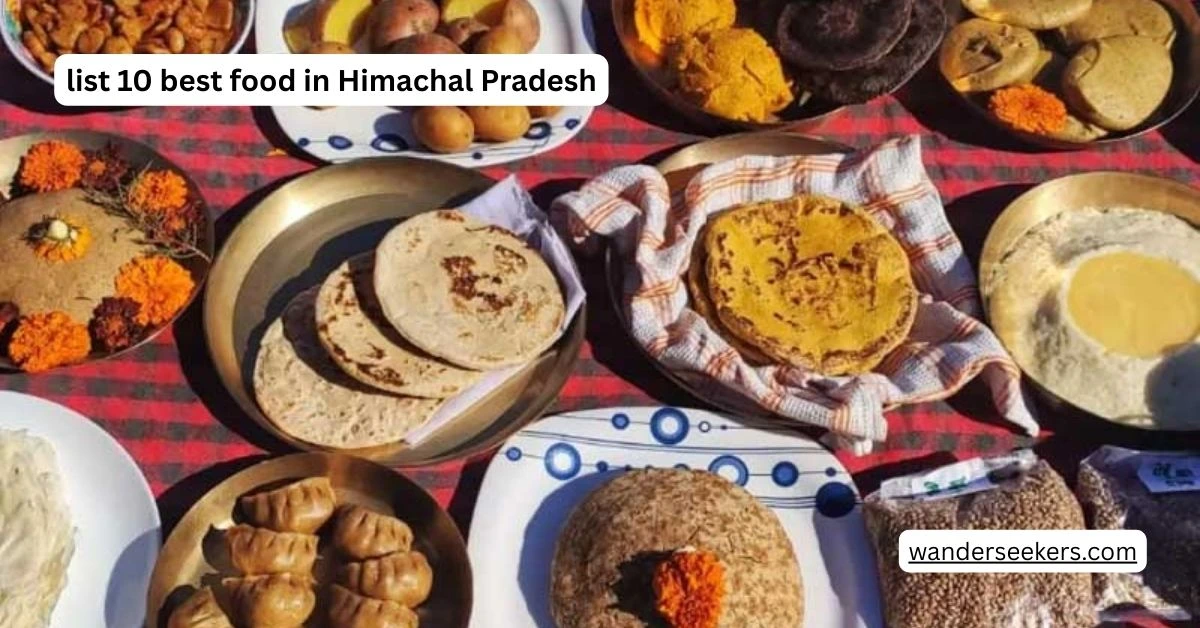Himachal Pradesh is a land of breathtaking landscapes and rich culinary traditions. The food here is deeply influenced by the cold climate, local ingredients, and traditional cooking methods. Here are 10 of the best foods you must try in Himachal Pradesh, along with detailed descriptions:
Table of Contents
1. Siddu
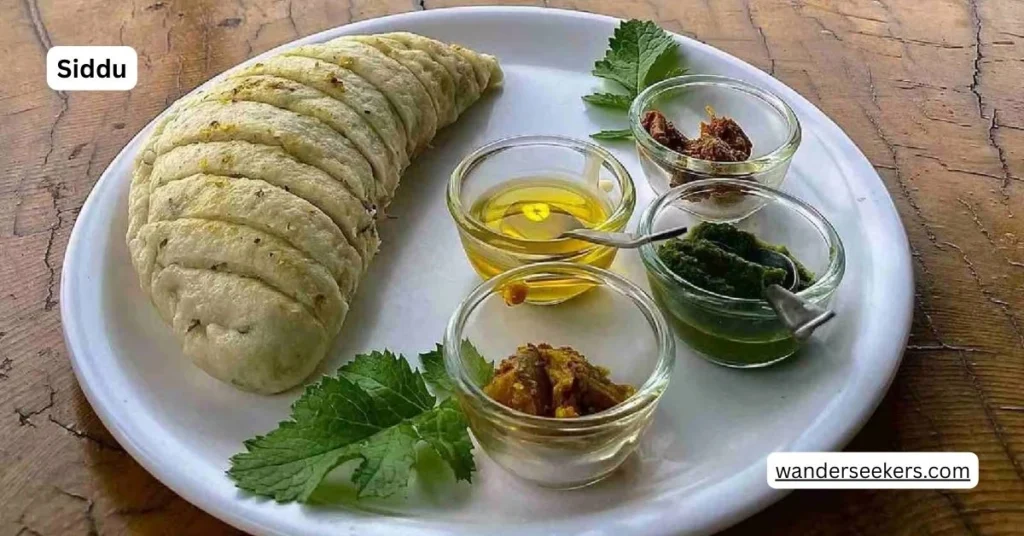
Siddu is a traditional Himachali dish, cherished for its unique preparation and rich flavors. It is a fermented steamed bread, made from wheat flour and yeast, which gives it a soft and fluffy texture. The dough is allowed to rise before being steamed, making it distinct from regular bread. Siddu is often stuffed with a variety of fillings, including lentils, walnuts, green peas, and aromatic herbs, adding depth to its taste. It is typically served warm with ghee, chutney, or dal, making it a comforting meal, especially in colder regions. This dish is deeply rooted in the culinary traditions of Himachal Pradesh and is commonly prepared for family gatherings and festivals. Siddu is not just a meal but a representation of the region’s food heritage, offering a delicious and nutritious experience. Its preparation requires patience, but the result is a flavorful, wholesome dish enjoyed by locals and visitors alike.
2. Madra
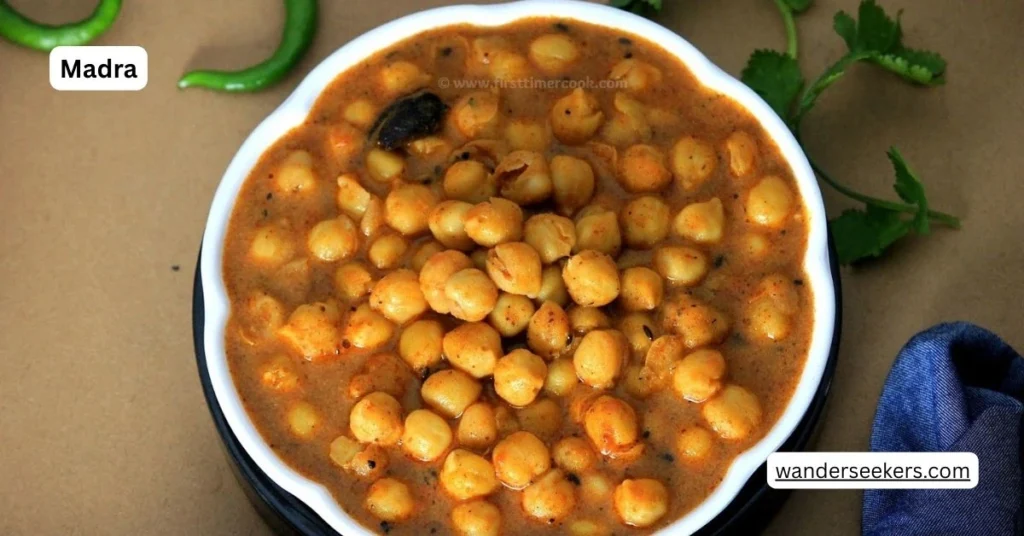
Madra is a traditional dish from Himachal Pradesh, known for its rich, creamy texture and distinct flavors. It is a yogurt-based curry made with legumes like chickpeas or kidney beans, slow-cooked with aromatic spices such as cumin, cardamom, cinnamon, and cloves. Unlike many Indian curries, Madra does not use onions or tomatoes, relying instead on yogurt to create its tangy and slightly sour taste2. The dish is an essential part of Himachali cuisine and is often served during Dhaam, a traditional feast. Cooking Madra requires patience, as the yogurt must be carefully simmered to prevent curdling, resulting in a thick, flavorful gravy3. It is typically enjoyed with steamed rice, making for a wholesome and satisfying meal. Madra’s unique preparation and deep-rooted cultural significance make it a cherished dish among locals and visitors alike.
3. Dhaam
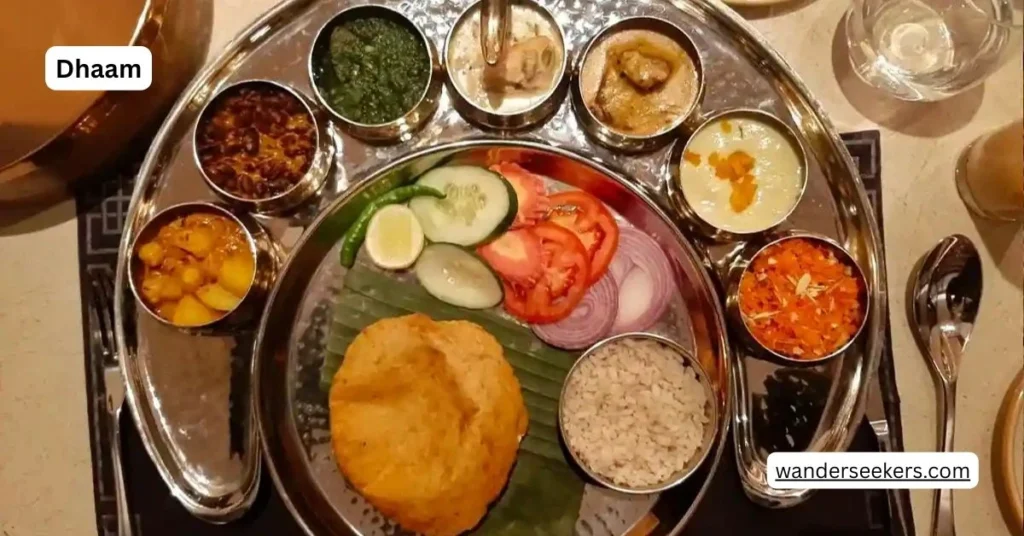
Dhaam is a traditional feast from Himachal Pradesh, celebrated during festivals, weddings, and special occasions. It is a multi-course meal served on leaf plates, featuring a variety of dishes that reflect the rich culinary heritage of the region. The meal typically includes plain rice, lentils, rajma madra (kidney beans cooked in yogurt), boor ki kadi, khatta (sweet and sour sauce), and meetha bhaat (sweet rice). Prepared by bots, and hereditary Brahmin chefs, Dhaam follows a unique cooking style using brass utensils, enhancing the flavors of the dishes. The feast is not just about food—it is a cultural experience, bringing people together to enjoy traditional Himachali flavors in a communal setting. Each district has its variation of Dhaam, making it a diverse and cherished tradition2. The combination of rich spices, slow-cooked ingredients, and local techniques makes Dhaam a truly special and unforgettable meal.
4. Tudkiya Bhath
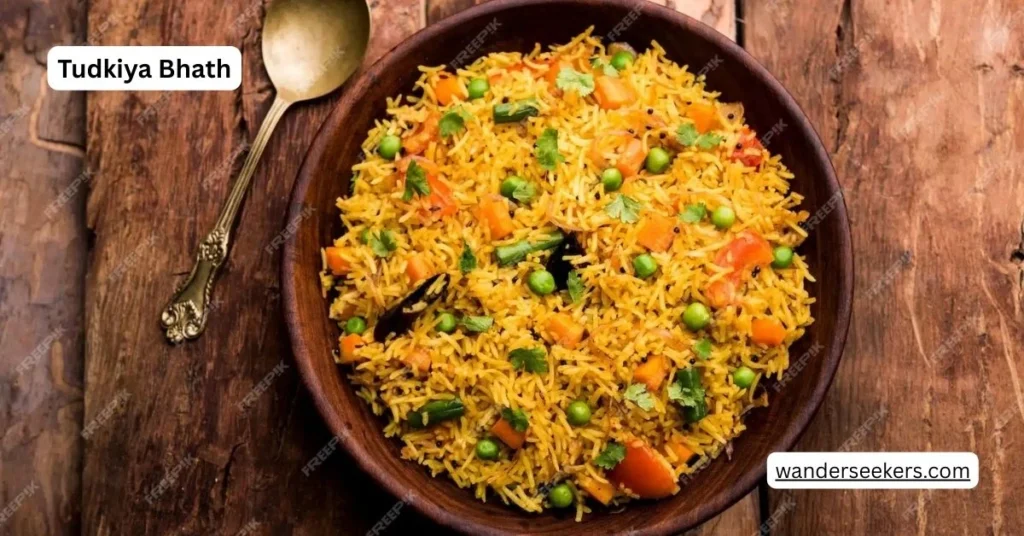
Tudkiya Bhath is a traditional rice dish from Himachal Pradesh, known for its rich flavors and aromatic spices. Unlike regular pulao, it is slow-cooked with soaked rice, lentils (masoor dal), yogurt, and a blend of spices like cinnamon, bay leaf, star anise, and dad phool (stone flower), giving it a distinct Pahari taste2. The dish also includes potatoes, tomatoes, onions, and ghee, enhancing its texture and depth of flavor. Tudkiya Bhath is often served with mashed dal (Kangra Teliya Mah) and a squeeze of lime, making it a comforting and wholesome meal. The slow-cooking process allows the spices to infuse deeply, creating a rich and satisfying dish that is perfect for family gatherings or festive occasions. This Himachali specialty showcases the region’s culinary heritage, offering a unique and flavorful alternative to traditional rice dishes.
5. Bhey (Spicy Lotus Stems)
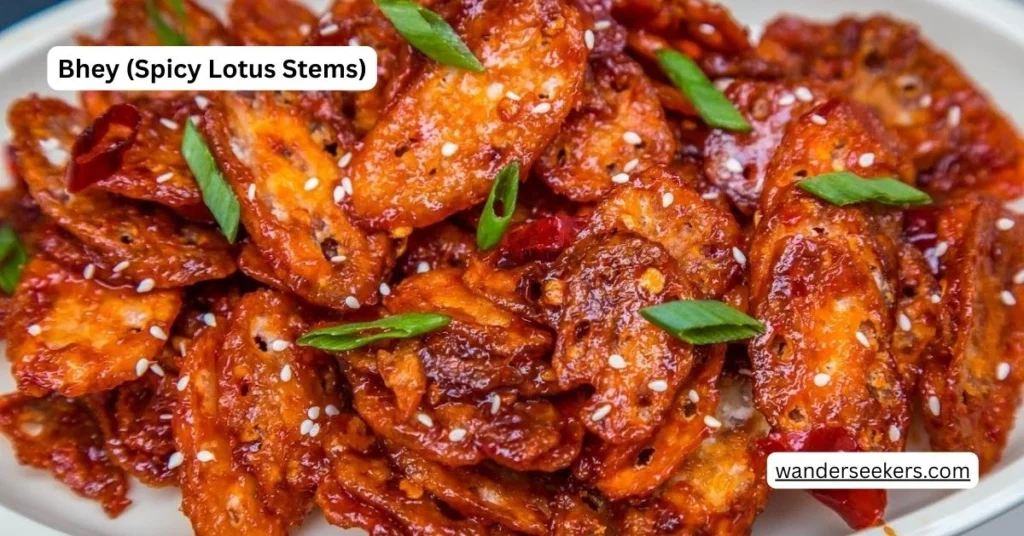
Bhey, or spicy lotus stems, is a traditional dish from Himachal Pradesh, known for its crunchy texture and bold flavors. The dish is made by thinly slicing lotus stems, boiling them until tender, and then stir-frying them with onions, garlic, ginger, and a blend of spices like turmeric, red chili powder, and coriander. A small amount of chickpea flour (besan) is added to enhance the texture and bind the flavors together. Bhey is typically enjoyed as a side dish or snack, often paired with chapati or rice. The lotus stem itself is packed with nutrients, offering health benefits such as improved digestion and immunity. This dish reflects the spicy and flavorful preferences of Himachali cuisine, making it a favorite among locals. Its simple preparation and unique taste make Bhey a delightful and nutritious addition to any meal.
6. Chha Gosht
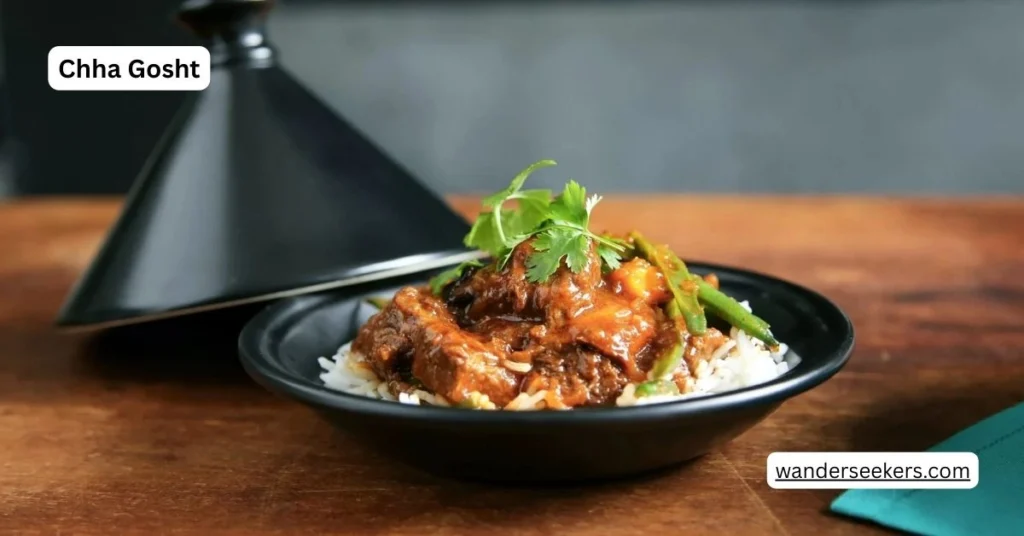
Chha Gosht is a traditional Himachali mutton dish, known for its rich flavors and aromatic spices. The dish features marinated mutton slow-cooked in gram flour and yogurt-based gravy, which gives it a unique texture and taste. The preparation involves spices like cloves, cinnamon, bay leaves, black cardamom, and coriander powder, creating a mildly spicy yet tangy flavor profile. The slow-cooking method ensures the meat absorbs the flavors deeply, resulting in a tender and flavorful dish. Chha Gosht is typically served with steamed rice or chapati, making it a hearty and satisfying meal. This dish is a staple in Himachali cuisine, often prepared for special occasions and family gatherings. Its rich taste and cultural significance make it a favorite among locals and visitors alike.
7. Babru
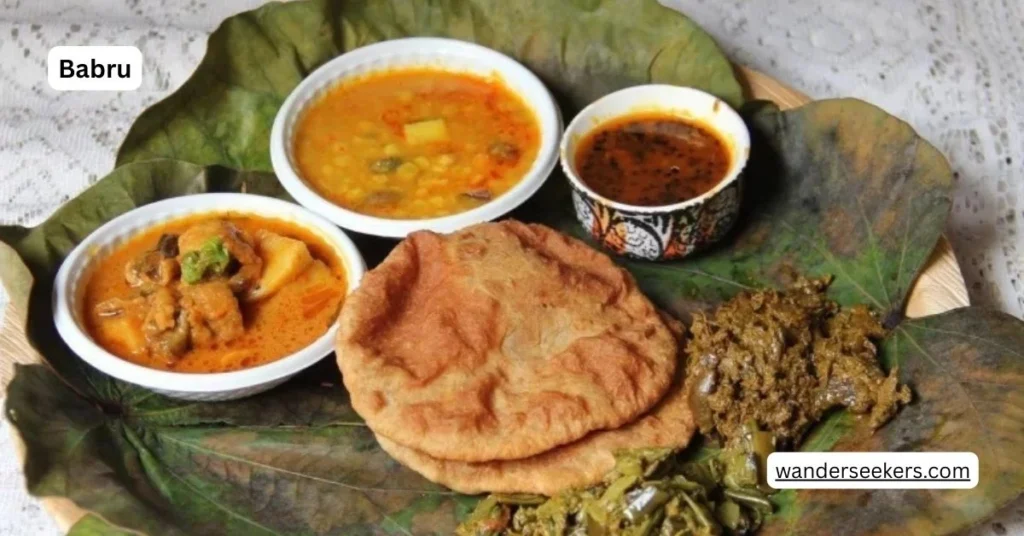
Babru is a traditional Himachali dish, often enjoyed as a breakfast delicacy. It is a stuffed deep-fried bread, similar to poori but with a unique twist. The dough is made from whole wheat flour, while the stuffing consists of black gram dal (urad dal), which is soaked, ground, and seasoned with spices. The stuffed dough is rolled out and deep-fried until golden brown, resulting in a crispy exterior and a flavorful, soft filling. Babru is typically served with chutney, pickles, or a side of sabzi, making it a hearty and satisfying meal. This dish is popular in Himachal Pradesh, reflecting the region’s rich culinary traditions. Its preparation requires patience, but the result is a delicious and wholesome dish that is loved by locals and visitors alike.
8. Aktori
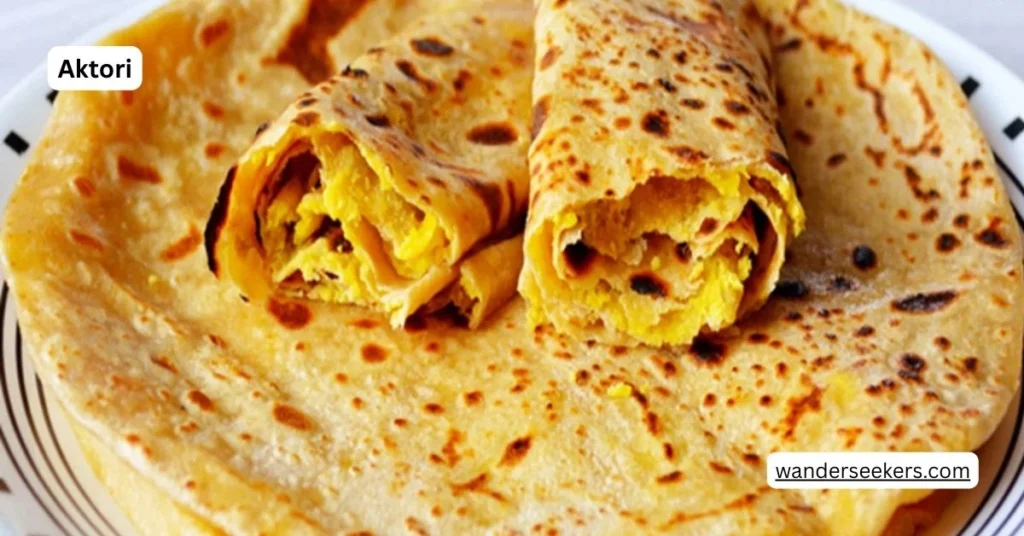
Aktori is a traditional Himachali dish, often enjoyed during festivals and special occasions. It is a sweet pancake-like delicacy made by mixing buckwheat flour with wheat flour, creating a unique texture and flavor. The batter is prepared with milk, sugar, and baking soda, then pan-fried in ghee until golden brown. This dish originates from the Lahaul-Spiti region and is deeply rooted in the local culinary traditions. Aktori is typically served drizzled with honey or ghee, enhancing its rich taste. It is a simple yet delicious treat that reflects the essence of Himachali cuisine. The combination of nutritious buckwheat and wholesome ingredients makes it a healthier alternative to regular pancakes. Whether enjoyed as a breakfast dish or a festive dessert, Aktori offers a delightful taste of the mountains.
9. Kullu Trout Fish
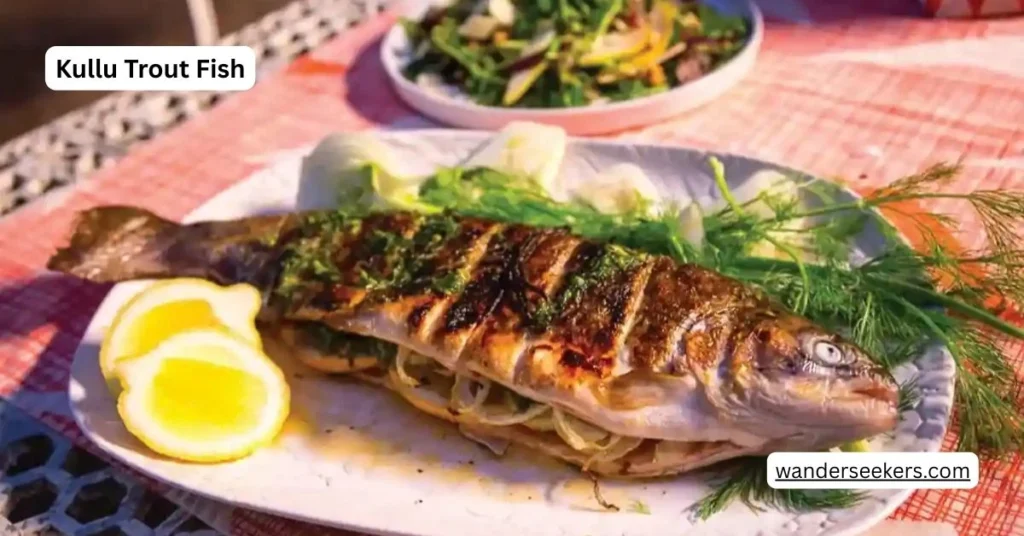
Kullu Trout is a famous Himachali dish, known for its simple yet flavorful preparation. This dish features fresh trout, sourced from the cold waters of Himachal Pradesh, marinated with mustard oil, lemon juice, crushed coriander seeds, dill leaves, and chili flakes to enhance its natural taste. Unlike heavily spiced Indian fish dishes, Kullu Trout is lightly seasoned to retain the delicate flavors of the fish. The marinated trout is pan-fried until golden brown and served with a tangy mustard-based sauce, adding depth to its taste. Traditionally, it is enjoyed with steamed rice, making for a wholesome and satisfying meal. This dish is a favorite among seafood lovers and is often prepared in local eateries and homestays across Kullu. Its fresh ingredients, minimal spices, and rich taste make Kullu Trout a must-try dish for anyone exploring Himachali cuisine.
10. Mittha
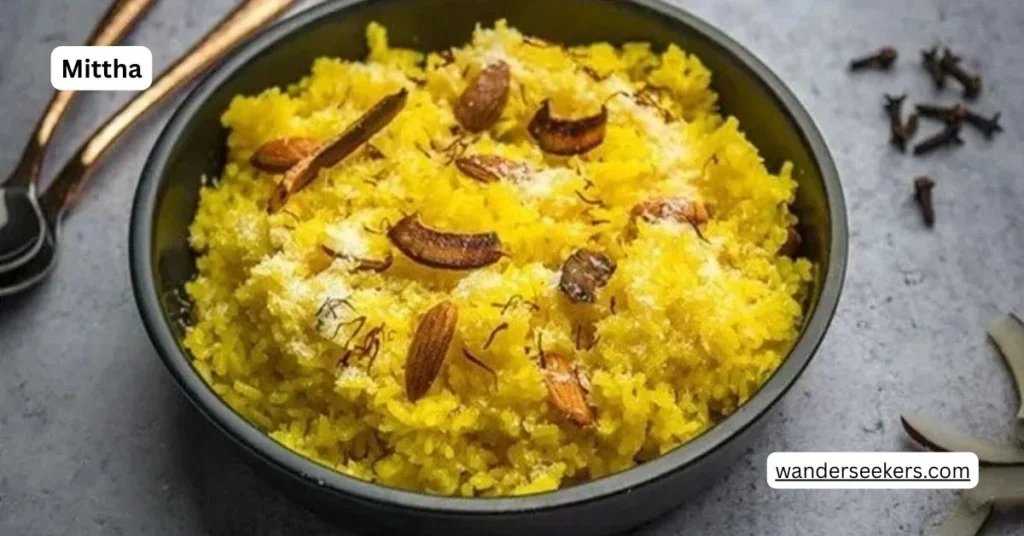
Mittha is a traditional sweet dish from Himachal Pradesh, cherished for its rich flavors and cultural significance. This delightful dessert is made with rice, sugar or jaggery, ghee, and dry fruits like raisins, cashews, and almonds, creating a perfect balance of sweetness and texture. The preparation involves slow-cooking rice, layering it with fried dry fruits, and infusing it with saffron and cardamom, which enhance its aroma and taste. Mittha is often served during festivals, weddings, and special occasions, symbolizing warmth and hospitality in Himachali culture. The dish’s simplicity, combined with its luxurious ingredients, makes it a favorite among locals and visitors alike. Whether enjoyed as a festive treat or a comforting dessert, Mittha captures the essence of Himachal’s culinary traditions.
